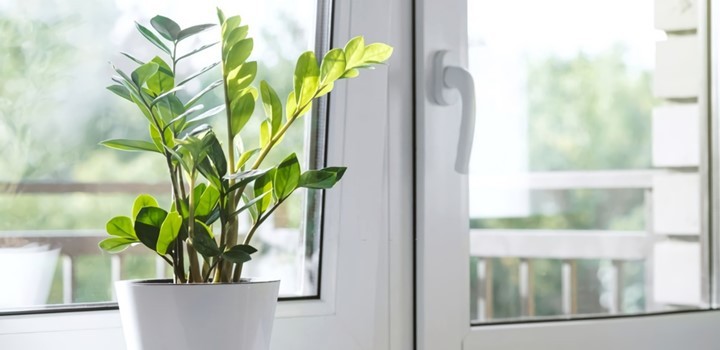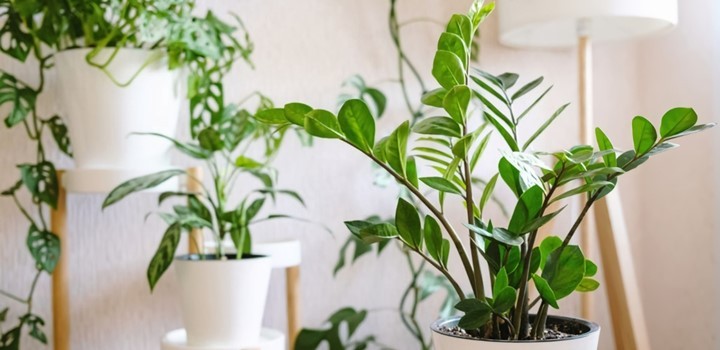ZZ plants (Zamioculcas zamiifolia) are one of the most popular and favorite houseplants among plant lovers. The best feature of this plant is, they thrive in almost any condition. However, there are some issues that bother the ZZ plants.
Drooping or falling over is one of them that ruins the health and beauty of the plant. To fix this problem you have to identify the exact cause behind the drooping ZZ plants so that you can treat them rightly.
So, why are the ZZ plants drooping?
Watering issues, Improper sunlight, Imbalanced fertilizer, Transplant shock, and Cold snaps are the 5 major reasons for the ZZ plants falling over.
The good news is you can still save your drooping ZZ plants if you take action quickly. In this article, I am going to explain how to fix a droopy ZZ plant in the easiest way.
So, let’s jump right in-
Why is the ZZ Plant Dropping- Solution

1. Incorrect Watering
ZZ plants are native to Eastern Africa. So they can survive in dry conditions. So when you go overboard with watering they will start drooping. Overwatering will also infect the ZZ plant with root rot and the leaves become floppy.
Surprisingly, underwatering can cause the same thing though it’s less common in ZZ plants. When the plants are not watered for a long time the leaves start to get dry, wilt and both the leaves and stem start falling over.
Control Measure
If you suspect you have overwatered them then stop watering until the soil completely dries out. Repot your ZZ plants in a larger pot with enough drainage holes if necessary. Place a tray under the pot so that excess water can drain out.
If the leaves are dry, curling, and falling off then you need to water the ZZ plant right at once. Soon when the water requirement is fulfilled the stem will stand tall and the leaves will stop drooping.
Now the question is how much and how often to water?
Well, watering largely depends on the soil, environmental conditions, and size of the container. During summer the ZZ plants will need more water than in winter. Get a moisture meter to get an idea of how much water is present in the soil and how much you need to water (Our pick: Atree Soil Soil Tester Kits with Moisture, Light, and PH Test for Garden).
Usually, the ZZ plants need light watering every week during the summer. And during the winter once every three weeks is enough for them. You can feel the soil before watering And also lift the pot to see its weight. If the pot seems lighter than usual then your ZZ plant needs water.
2. Improper Sunlight
Too much exposure to sunlight will make your ZZ plants droopy. In addition, the leaves will start to curl, turn yellow, and fall off.
On the other hand, if they don’t get their required dose of sunlight continuously the growth will be very slow. The ZZ plants will grow unhealthy and weak. As a result, the stem will droop along with the leaves
Control Measure
It’s best for the ZZ plants if they get direct sunlight for 4-5 hours. But not more than that. Put them in a corner of the north-facing room so that they can get a few hours of direct sunlight. If they are getting more light than they need, keep them shaded after a few hours of the morning sun.
3. Lack Of Fertilizer
ZZ plants usually aren’t much of a feeder. But in pot soil nutrients quickly get utilized. So, after a while, ZZ plants start lacking their necessary nutrients. As a result, the ZZ plant starts drooping.
When you have eliminated other possible causes for your ZZ plant falling over you can try giving them a light dose of fertilizer. It will revive the leggy ZZ plants.
Control Measure
Fertilize your ZZ plants with a well-balanced fertilizer once every 3 months. Apply according to the label instructions so that you don’t over-fertilize them. Because too much fertilizer will also burn the roots of your ZZ plants. The symptoms will also be the same as drooping and yellowing of the leaves.
If your ZZ plants are drooping and you suspect that you have used too strong a dose of fertilizer then re-pot them in fresh soil. The new soil will have balanced nutrients and will help your plant to recover gradually.
4. Cold Snap
ZZ plants are native to mostly hot and dry conditions. When the temperature goes below 45°F (7°C) their growth almost stops. In freezing temperatures the plant starts to wilt and turn brown, Ultimately the whole plant starts falling off.
Control Measure
If your area is very cold then keep your outdoor ZZ plants in a warm place inside your house. If they are already inside the house this shouldn’t be a problem.
Remove the stems and leaves that have been damaged by the cold snaps. This will release the pressure off the ZZ plants. Make sure during this time they are getting enough direct or indirect sunlight every day.
5. Transplant Shock
As the ZZ plant keeps growing it needs to be transferred to bigger pots or containers. But when we transplant them to another pot sometimes the roots get stressed. As a result, the roots don’t uptake enough water and nutrients from the soil. This is why the ZZ plants start drooping after repotting.
Control Measure
Transplanting is very necessary sometimes. So, whenever you re-pot them somewhere make sure the root damage is minimum. After transplanting water a little amount immediately.
If you’ve just transplanted the ZZ plants and they seem to be drooping, you have to give them some time to recover. Meanwhile, water them as required to prevent the root from drying. Once the roots have adjusted to the new soil the ZZ plant will revive itself.
How to Fix a Drooping ZZ Plant
At first start by inspecting the watering issue. If you are underwatering it then start by watering very little every 3-4 days. When the plant turns healthy, water once every week. If you think you’ve overwatered then stop watering till the soil gets dry. Also, you can transplant them in fresh soil in a larger pot with better drainage holes.
Regulate the temperature of your house within their preferred range and expose them to sunlight for 3-4 hours every day. Keep a fertilizing schedule and feed them every 3-4 months.
Continue to repeat these steps as long as it takes for the plant to revive itself. The best thing is, ZZ plants are pretty hardy, so they will recover if you keep caring for them patiently.
Conclusion
There are so many reasons that can cause your ZZ plant to fall over. Other than the causes above, sometimes if they are physically damaged while handling, they can be drooping too. So work with them very gently.
Here, I’ve tried to cover every area of the causes of why the ZZ plants are drooping. I hope you found this article helpful while inspecting what’s causing your precious plants to fall over. The good news is you can apply these same measures to your other tropical houseplants.
Read More
